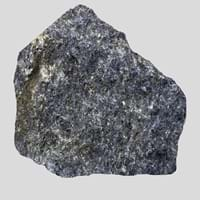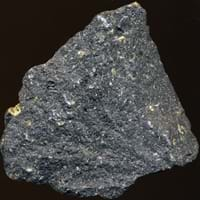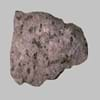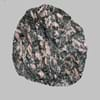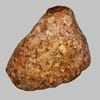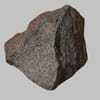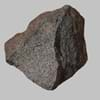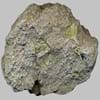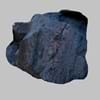Definition
Blueschist is a metamorphic rock which is generally blue in color and is formed under conditions of high pressure and low temperature
Basalt is a common extrusive igneous rock formed by the rapid cooling of basaltic lava exposed at or very near the surface of Earth
Discoverer
Edgar Bailey
Georgius Agricola
Etymology
From French schiste, Greek skhistos i.e. split
From Late Latin Basaltes (variant of basanites ), very hard stone, which was imported from Ancient Greek Basanites
Class
Metamorphic Rocks
Igneous Rocks
Sub-Class
Durable Rock, Medium Hardness Rock
Durable Rock, Medium Hardness Rock
Group
Not Applicable
Volcanic
Other Categories
Fine Grained Rock, Medium Grained Rock, Opaque Rock
Fine Grained Rock, Opaque Rock
Texture
Foliated
Glassy, Massive, Porphyritic, Scoriaceous, Vesicular
Color
Blue, Bluish - Grey, Purple, Shades of Blue
Black, Brown, Light to Dark Grey
Durability
Durable
Durable
Appearance
Dull and Banded
Dull and Soft
Interior Uses
Floor Tiles, Flooring, Homes, Hotels, Kitchens
Floor Tiles, Homes, Hotels, Kitchens
Exterior Uses
Garden Decoration, Office Buildings
As Building Stone, Paving Stone, Garden Decoration, Office Buildings
Other Architectural Uses
Not Yet Used
Curbing, Whetstones
Construction Industry
As Dimension Stone, Cobblestones, Rail Track Ballast, Roadstone
Arrowheads, As Dimension Stone, Cobblestones, Cutting Tool, Rail Track Ballast, Roadstone
Medical Industry
Not Yet Used
Not Yet Used
Antiquity Uses
Artifacts, Monuments, Sculpture
Artifacts, Monuments
Commercial Uses
Cemetery Markers, Commemorative Tablets, Creating Artwork, Curling, Tombstones
An Oil and Gas Reservoir, Commemorative Tablets, Creating Artwork, Used in aquariums
Types
Not Available
Alkaline Basalt, Boninite, High Alumina Basalt, Mid Ocean Ridge Basalt (MORB), Tholeiitic Basalt, Basaltic trachyandesite, Mugearite and Shoshonite
Features
Has High structural resistance against erosion and climate, Very fine grained rock
Has High structural resistance against erosion and climate, Very fine grained rock
Archaeological Significance
Famous Monuments
Data Not Available
Easter Island in the Polynesian Triangle, Pacific Ocean, Gateway of India in Mumbai, India, Gol Gumbaz in Karnataka, India
Famous Sculptures
Data Not Available
Data Not Available
Formation
Blueschist forms due to the metamorphism of basalt and other rocks with similar composition at high pressures and low temperatures and approximately corresponding to a depth of 15 to 30 kilometers and 200 to 500 °C.
Basalt forms when lava reaches the Earth's surface near an active volcano. The temperature of lava is between 1100 to 1250° C when it gets to the surface.
Mineral Content
Albite, Chlorite, Epidote, Garnet, Glaucophane, Lawsonite, Muscovite or Illite, Quartz
Olivine, Plagioclase, Pyroxene
Compound Content
Aluminium Oxide, CaO, Iron(III) Oxide, FeO, Potassium Oxide, MgO, MnO, Sodium Oxide, Phosphorus Pentoxide, Silicon Dioxide, Titanium Dioxide
Aluminium Oxide, CaO, Iron(III) Oxide, FeO, Potassium Oxide, MgO, MnO, Sodium Oxide, Phosphorus Pentoxide, Silicon Dioxide, Titanium Dioxide
Types of Metamorphism
Not Applicable
Contact Metamorphism
Types of Weathering
Mechanical Weathering
Biological Weathering
Types of Erosion
Chemical Erosion, Coastal Erosion, Water Erosion, Wind Erosion
Not Available
Grain Size
Fine to Medium Grained
Fine Grained
Fracture
Conchoidal
Conchoidal
Streak
White to Grey
White to Grey
Porosity
Highly Porous
Less Porous
Luster
Dull
Not Available
Compressive Strength
Not Available
Cleavage
Slaty
Not Available
Specific Gravity
3-3.2
2.8-3
Transparency
Opaque
Opaque
Density
2.8-2.9 g/cm3
2.9-3.1 g/cm3
Specific Heat Capacity
Not Available
Resistance
Impact Resistant, Pressure Resistant
Heat Resistant, Pressure Resistant, Wear Resistant
Deposits in Eastern Continents
Asia
Japan, Turkey
India, Russia
Africa
Egypt, Ethiopia, South Africa
South Africa
Europe
France, Greece, Iceland
Iceland
Others
Not Yet Found
Not Yet Found
Deposits in Western Continents
North America
USA
Canada, USA
South America
Not Yet Found
Brazil
Deposits in Oceania Continent
Australia
New Zealand
Not Yet Found
All about Blueschist and Basalt Properties
Know all about Blueschist and Basalt properties here. All properties of rocks are important as they define the type of rock and its application. Blueschist belongs to Metamorphic Rocks while Basalt belongs to Igneous Rocks.Texture of Blueschist is Foliated whereas that of Basalt is Glassy, Massive, Porphyritic, Scoriaceous, Vesicular. Blueschist appears Dull and Banded and Basalt appears Dull and Soft. The luster of Blueschist is dull while that of Basalt is not available. Blueschist is available in blue, bluish - grey, purple, shades of blue colors whereas Basalt is available in black, brown, light to dark grey colors. The commercial uses of Blueschist are cemetery markers, commemorative tablets, creating artwork, curling, tombstones and that of Basalt are an oil and gas reservoir, commemorative tablets, creating artwork, used in aquariums.
